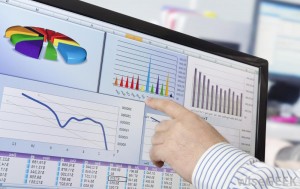Economic Analysis
Retrieved from: http://images.wisegeek.com
In order for a solar charging umbrella to be implemented at Lafayette College, a capital request form must be submitted and subsequently approved. The capital request form requires a budget estimate and although our budget is rigid, the positive externalities will not be factored in, failing to give a true picture of the projects “cost.” Economic value can be derived from multiple sources, some of which cannot be specifically quantified based solely on monetary value. For those factors we have done our best to accurately convert them to quantifiable values so alternatives can be fairly compared.
| Cost of Energy Generation (Easton, PA) | 0.12 | cents/kW |
| Cost of Energy Generation (National Rate) | 0.083 | cents/kW |
| Energy Produced per day | 0.6 | kWhr |
| Savings per Day | Savings per school year |
| $ 0.86 | $ 181.44 |
| $ 0.60 | $ 125.50 |
We have identified raising awareness as the primary objective of our proposed solution; however the economic value of this is not easily quantifiable. Therefore, it was crucial that a process for deriving the economic value of intangibles be identified, allowing for standardized adjustments to costs reflecting feasibility given our unique needs. One method we identified was benefit-cost analysis, which determines if an action is advisable based on the output of benefits divided by costs (Laskaris 2013). Given the sunk costs that are typical of the majority of sustainable solutions, having the ability to adjust the price based on the effects of the implemented solution will allow for a more acceptable outcome of a breakeven analysis.
| Alternative | Cost | Days Till Breakeven | School Years |
| Solar Power-Dok | $ 9,500.00 | 10,995.37 | 30 |
| Solstice | $ 6,000.00 | 6,944.44 | 19 |
| Radiance | $ 8,500.00 | 9,837.96 | 27 |
Conducting the breakeven analysis using adjusted costs will result in a shorter period of time to recoup the costs, which is viewed as a more favorable result. With a well-executed benefit-cost analysis, it will be feasible to determine a process for adjusting the price so that the output is not artificial, it is backed by fact. Imputing the result into a breakeven analysis would yield the amount of time it will take to recoup the cost of the investment (Blank 2012). Without the use of the adjusted cost in the breakeven analysis, the manufacturer price would need to be used, whose result is very discouraging. Our initial result was a duration of over two decades for the college to recoup the cost of implementing a Solar Power-Dok on Lafayette’s campus. However the only return on investment considered during the first analysis was the amount of money saved on energy production costs. That factor alone is a major source of potential error, the price of energy will not stay constant throughout the next two decades and therefore unless the average over that span is equivalent to the number we used, then the analysis does not yield a concrete result. Another consideration is inflation, which will undoubtedly fluctuate over the time period.
The error resulting from the use of certain factors can be mitigated to a certain degree, which would increase the accuracy of our breakeven analysis. In order to adjust these factors, we had to first determine the best process for forecasting the price. Present Worth Analysis was utilized to determine the net present value of the cash flows for the monetary savings generated by the Solar Power-Dok. Finding appropriate rates of change for inflation and the cost of energy generation is crucial because an incorrect factor would corrupt our results. We determined that appropriate rates should be more conservative than neutral, to build an additional cushion into the number, protecting our result from new sources of error.
Ultimately the breakeven analysis and the benefit-cost analysis will yield the two most important indicators of the attractiveness of implementation, through a purely economic lens. However the two analyses’ results offer very different conclusions. The benefit-cost analysis result is viewed as a binary value; if it is less than 1 then the project is too expensive to justify undertaking. If the resultant is greater than 1, the project should be undertaken because the benefits outweigh the costs (Blank 2012). With a breakeven analysis, the output number represents the number of, in our case, school years until the return on invested capital matches the cost. We decided that the Solar Power-Dok will get most of its use during the school year, while students are on campus, so in the breakeven analysis we used school years (35 weeks per calendar year) as the unit of time. This will further ensure the accuracy of the result of the analysis due to the increased accuracy of the input values (El Alimi 2014). Together these two powerful analyses will offer a good picture of the economic value of the Solar Power-Dok relative to the needs of Lafayette College.
(For the price adjustments, the number one ranked alternative received a negative adjustment to reflect savings from a positive characteristic. If the alternative was in the middle, no price adjustment was used. For the least desirable alternative a positive increase was used to reflect an increase in price. The magnitude of the adjustments was determined based on the significance of the category, a more important factor received a greater weight.)

Comparing the output of each analysis between different alternatives is possible with breakeven analysis but not benefit-cost analysis. With breakeven analysis, whichever alternative returns the smaller time period would be the more favorable solution to pick for implementation. This is due to the more attractive economic value; being able to recoup the sunk costs more quickly is much more desirable for Lafayette College when solely considering the economic effects. We are in favor of this for other reasons; if the capital is recovered faster, then a new sustainability project can be started sooner or at the very least our project can be categorized as “complete” in terms of economic obligations. The greater the sustainability efforts on campus, the greater awareness will be among the student body, and that was the main source of motivation for undertaking the project. (El Alimi 2014)
Another economic facet which required our attention was going through the bureaucratic process of requesting the funds for the project from Lafayette College. The college will need to be responsible for paying the initial costs, as well as maintenance costs. Given the relative immaturity of this technology, little is known about the maintenance costs. The region in which the Solar Power-Dok would be implemented will play a role in the cost of maintaining the solution because inclement weather could damage the device or require man hours to take precautions to ensure it will not be damaged. All of this needed to be articulated on the capital request form.
Once we chose the Solar Power-Dok as the product of our efforts, we received an official quote from Enerfusion Inc. to get shipping and installment costs for the specific unit. The cost of the Solar Power-Dok is $9,495.00, with shipping and installation cost of $1,875.00, totaling $11,370.00. This is the amount of capital requested on the capital request form we submitted.
Retrieved from: http://mavensnotebook.com
Another part of the economic analysis our group felt was necessary to include was the economic justification proposing the implementation of such an expensive piece of equipment. Again, the expected outcome of implementing a Solar Power-Dok on campus is not to turn Lafayette into a campus generating power exclusively from renewable and sustainable sources(although that would be nice). Our goal is to raise awareness, given the college’s lack of any tangible commitment to sustainable energy practices. One tactic for raising awareness utilized by Lafayette College is hiring guest lecturers to speak on an important issue. At this time in history sustainable energy practices are arguable the single most important issue the entire world is currently facing.
A guest speaker can cost thousands of dollars for a lecture lasting less than two hours, and Lafayette College is able to justify the expense. The Solar Power-Dok would be on campus raising awareness for many years. Adjusting the cost of the Solar Power-Dok to reflect its value over the lifespan of the equipment makes it more attractive than the popular alternative of hiring a speaker. The advantages of the Solar Power-Dok over a guest lecturer are a constant presence on campus and the ease it affords students to use and understand the technology, at their discretion, with limited interruptions. (Ahi P 2014)
The Solar Power-Dok would be available to the campus community all the time, whereas a guest lecturer’s time on campus is far more limited. The Solar Power-Dok would serve as a constant reminder of the issue of global warming and its link to energy production and consumption. Effectively, it would have the ability to provoke thought on the issue for the entire time it is on our campus. Compared to, at most, the few hours a speaker has the ability to provoke thought on an issue while on campus. The availability of a lecturer is almost exclusively limited to the set time they have to deliver their speech. The Solar Power-Dok would be available to the entire campus community always. Another positive externality resulting from the implementation of the Solar Power-Dok is the opportunity it gives users to interact with and gain intuition about the technology utilized (Ahi P 2014). The importance of this should not be downplayed because a relationship with the technology and awareness of the issue such as this cannot be fostered exclusively by a guest lecturer.
| Solar Power-Dok Cost | $ 11,370.00 | ||||
| Guest Lecturer | $ 1,000.00 | $ 2,000.00 | $ 3,000.00 | $ 4,000.00 | $ 5,000.00 |
| Lectures Needed to Breakeven | 11 | 6 | 4 | 3 | 2 |
This table displays the number of lectures required to equal the cost of implementing the Solar Power-Dok. A range of $1,000 – $5,000 was considered for the price Lafayette College pays for an average guest lecturer. It is important to remember that the guest lecturer is only speaking for a short period of time and not a campus-wide resource like the Solar Power-Dok would be. That was a consideration that could not be accounted for in the analysis however with the results we obtained it is possible to make realistic estimates. From these numbers if we assume an average of two guest lecturers per year on an important topic (such as campus sustainability), the result is the number of years before the Solar Power-Dok becomes a more economically attractive alternative to hiring guest lecturers to raise awareness.
Please continue to the conclusion.




Leave a Reply